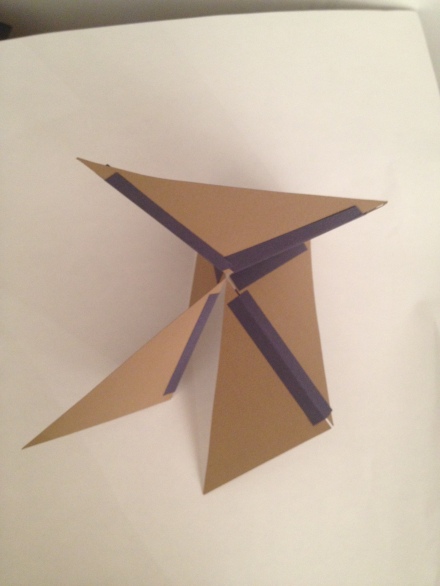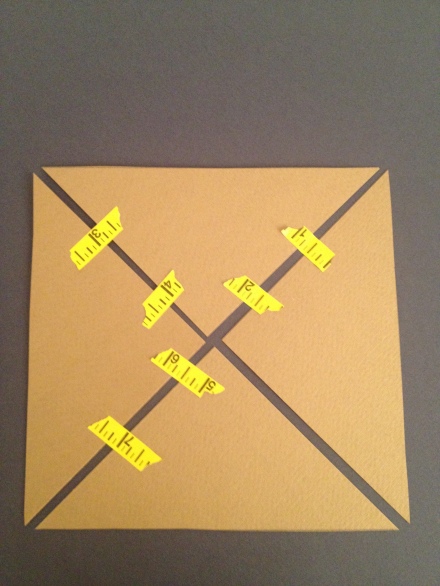The Museum of Modern Art in NYC underwent a big expansion and renovation project last year. The opening in the Fall the Museum introduced some exciting new exhibitions. “sur moderno journeys of abstraction” focuses on the work of participants in the post WWII avant-garde artists groups that were formed in South America. The work on display is all abstractions, many of which have geometric themes.


Willys de Castro’s 1962 oil on canvas on plywood wall sculpture, “Objeto ativo (cubo vermelho/branco)” (“active Object [Red/White Cube]”) explores the divisions within a cubic structure. The 3/4 of each of the 5 visible sides of the cube are painted red. A square measuring 1/4 of each side is painted white. This is done in such a way that it appears that there are white cubes embedded into the sculpture at two diagonal corners.

Eugenio Espinoza’s 1971 “untitled” half stretched canvas features a square grid pattern. By only stretching the top half of the painting the bottom of the canvas is slack. the grid has been altered as the sides of the canvas roll back.

Helio Oiticia’s 1958 gouache on board “Metasquema No.348” is an arrangement of bright blue non-overlapping rectangles. Positioned in a grid like pattern but skewed at various angles, the liner rectangles create a pattern that seems to have both kinetic and curvilinear properties.
Susan Happersett



















